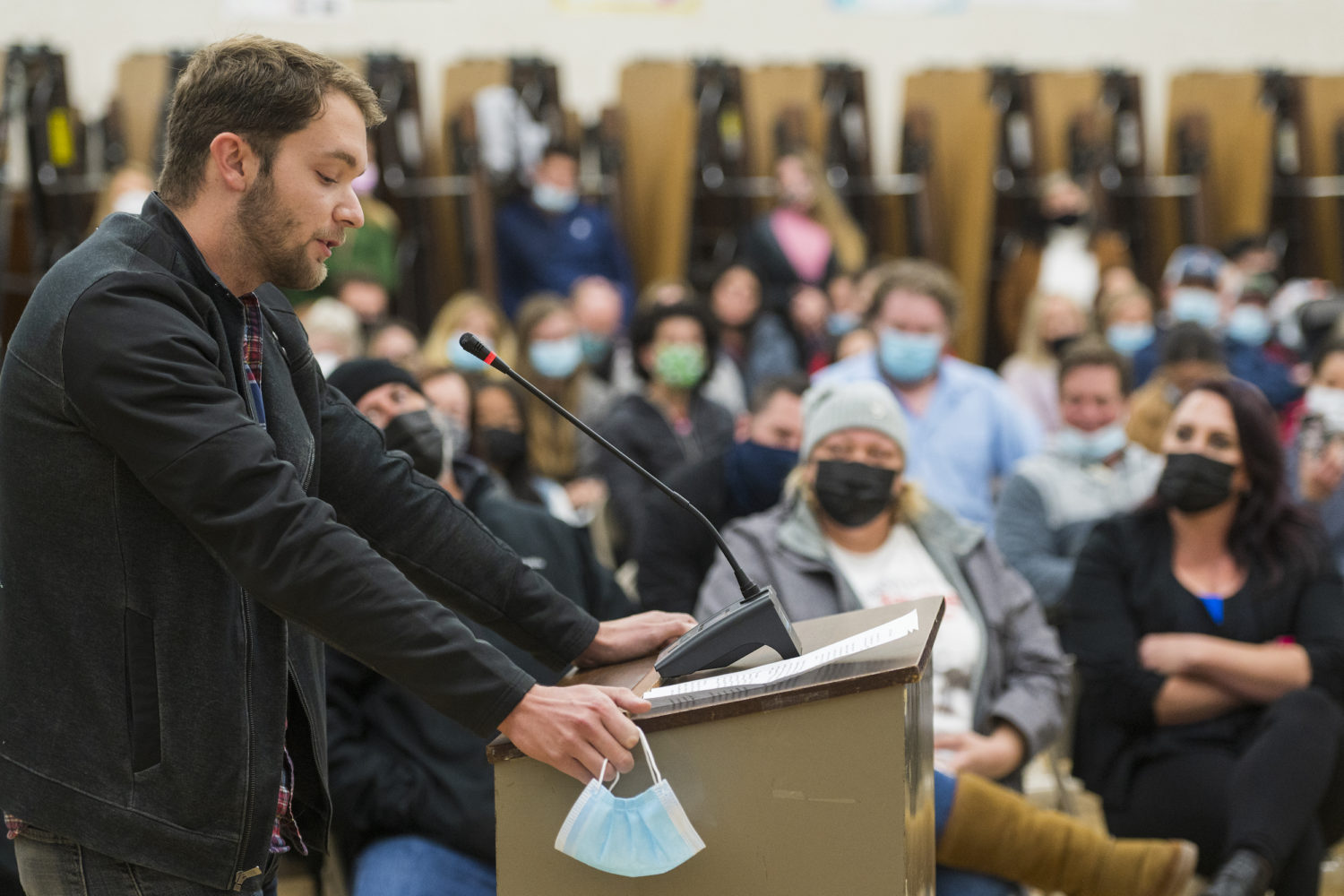One of Anna Lynn Winfrey’s duties as a staff writer at the Montrose Daily Press in Colorado is covering school board meetings for the rural Montrose County School District. This year’s meetings have been more contentious than ever.
As multiple school board candidates asserted that they were running to take critical race theory out of Montrose County schools — even though critical race theory is not taught there — Winfrey faced a dilemma: How would she report on the misinformation being spread without also contributing to the spread of misinformation?
During her interviews with candidates, Winfrey felt torn between the need to balance collegiality with the candidates as the only reporter working on this story and the fact that the candidates’ platforms were based on falsehoods.
“We talked about it in circles for 15 minutes,” Winfrey said. She pressed them for examples of critical race theory in the schools and they weren’t able to give her anything. “This is my first professional gig … so I think if I had a little bit more experience I would’ve pressed them a little bit more.”
From school districts banning the teaching of Art Spiegelman’s Holocaust graphic novel “Maus” to panics over LGBT content’s place in the classroom and the library, school board meetings have been making headlines now more than ever. And as misinformation and attacks on marginalized groups in these meetings are put under a spotlight, reporters like Winfrey feel increased pressure.
For reporters covering school board meetings, deciding how to contextualize decisions and conversations in coverage can be complex. Not mentioning the perpetuation of misinformation and disinformation about critical race theory, transgender students and COVID-19 at these meetings is also not a solution — this misinformation still harms people in their community.
Some of the most infamous stories from school board meetings have come from the South and Midwest, but the spread of misinformation in these meetings is an issue that runs rampant across the United States.
Anita Varma, Ph.D., an assistant professor at the University of Texas at Austin’s School of Journalism and the leader of the Solidarity Journalism Initiative, said that journalists have an ethical obligation to look into the claims.
When writing about debates over masks and COVID-19 vaccines, for example, reporters could choose not to quote factually incorrect claims.
“From a public interest perspective … that there is not a consensus that masks and vaccines are good for us as a society dealing with this pandemic, I think that in itself is a newsworthy issue to report on,” Varma said. “And then the question is, well, who is whose claims are being represented within that?”
Varma also encourages reporters to reconsider including “shock value” quotes that are not representative of issues a community faces and might do more harm than good. For example, when reporting on a school district that is over 90% vaccinated against COVID-19, giving equal space to anti-vaccine skeptics may not be an accurate representation of views from the school district.
“All too often, the shock value quote somehow rises to the top, or that ends up being the thing that goes really viral on social media,” she said.
Different contentious issues may require different approaches. For example, while students are getting vaccinated against COVID-19, some districts that have banned critical race theory — like one of the districts that Winfrey covers — never actually taught critical race theory to begin with.
Due to how critical race theory has been weaponized, Varma is cautious about whether defining it as it was initially intended would contextualize it enough.
“In Wisconsin, I saw recently an attempt to say that we can’t use the words ‘justice,’ ‘equity’ or ‘diversity’ in classrooms,” Varma said. “If you ban those words, you would open up a host of problems with teaching anything race-related.”
Debates around equity education have real-life implications beyond the academic realm. Teaching accurate history and theory around the experiences of racialized people can impact students’ safety as they attend school each day. Anti-critical race theory rhetoric can also elevate antisemitism.
Likewise, the normalization of anti-trans language affects trans students’ ability to go to school without experiencing violence and discrimination, or even to graduate. A national survey of transgender youth by GLSEN found that 75% of transgender people feel unsafe at school, which is exacerbated when parents at school board meetings refer to books featuring trans experiences as “pornography” and attempt to ban trans students from sports participation.
Morgan Matzen covers education for The Argus Leader in Sioux Falls, South Dakota. She previously covered school board meetings in Rapid City, on the other side of the state. At those meetings, misinformation was rampant.
“A frequent patron of school board meetings once used her five minutes of public comment at the school board meeting to say the district taught a ‘pro LGBT agenda,’ among other topics like Black Lives Matter, that she called ‘poisonous, Marxist, revolutionary propaganda,’” Matzen said. “During the meeting, I was live-tweeting but chose not to put all of what she said on Twitter because it was just too much. That is straight-up misinformation.”
As transgender rights continue to be hotly debated in South Dakota, Matzen tries to carefully contextualize each claim made regarding trans students.
“Often lawmakers contextualized their bills as ‘protecting fairness in womens’ sports,’ when their bills would actually keep some women, [such as] transgender women and girls, out of womens’ sports,” Matzen said. “Lately I’ve been describing the bills more as ‘anti-trans’ when competitors have described them as ‘sex-at-birth’ or ‘fairness in sports’ bills.”
Matzen includes sections of every article about trans issues describing the difference between sex and gender and explains that these bills do not just segregate students by biological sex, but by biological sex at birth.
The barriers that prevent some parents from attending school board meetings in-person or via Zoom raise the stakes for reporters to get coverage right. Even before COVID-19, parents may not have been able to attend due to child care obligations or evening shifts. During COVID-19, immunocompromised parents may not have been able to attend meetings if they were only in person, especially if masks were not required.
“I think the big challenge facing reporters in a lot of cases is that if you’re told to cover a meeting, it can become kind of artificially constraining to step outside of that meeting because the folks who are not in that meeting are not there,” Varma said.
Varma recommends working to include at least one outside perspective or fact that is not raised in a meeting to make articles more of service to the community. For example, citing a Centers for Disease Control and Prevention study about the risk of developing diabetes for kids after contracting COVID-19 in a conversation about why COVID-19 safety protocols matter.
“Reporters almost always have this much small amount of space to add one source that we might not have otherwise heard from, add one fact we might not have otherwise heard if we’re just staying within the box,” Varma said.
This article was updated to better convey the meaning of a quote from Anita Varma.







